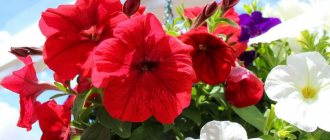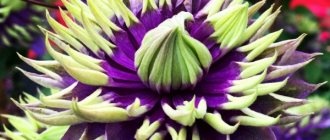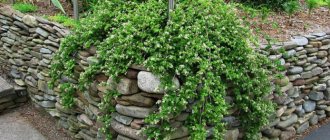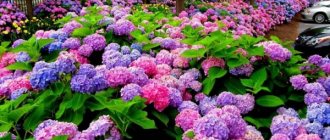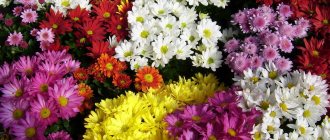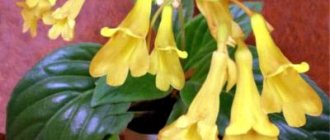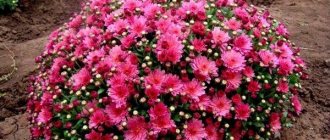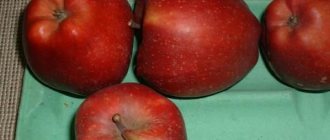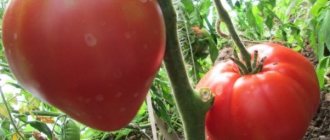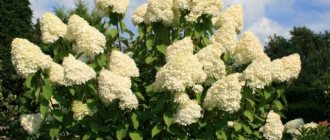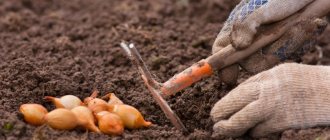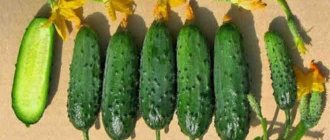Growing statice from seeds
Sowing seeds
The seeds have a very dense shell, so before planting you need to carefully file it with sandpaper or an ordinary manicure file. Then the seeds need to be placed in damp sawdust for a couple of days. The most suitable time for planting statice seeds for seedlings is considered to be the end of February and the beginning of March. As a soil, you can use peat soil or ready-made soil, which is designed specifically for flower seedlings. Place no more than one seed in one pot, sprinkle a small amount of soil on top and carefully spray with water so as not to wash the seeds out of the soil. Then you need to cover the pots with seeds with plastic wrap to create a greenhouse effect and place them in a warm, well-lit place. Under such conditions, the seeds will germinate within two weeks, and perhaps even earlier.
Statice seedlings
During the period of seed germination, it is necessary to lift the film daily and allow it to ventilate for fifteen minutes, removing accumulated condensation. After the shoots appear, you need to water them regularly and after each watering, carefully and with extreme caution loosen the soil. If the seeds were not initially planted in separate pots, they will need picking at the age of 3-4 leaves. In April, it is necessary to begin preparing seedlings for transplanting into open ground. To do this, you should gradually accustom the seedlings to the street, each time increasing the time the seedlings spend in the fresh air.
When to sow Statica for seedlings in 2021 according to the lunar calendar?
The effect of the moon on the strength of plants has been known and used for a long time. The main phases and location relative to the constellations are calculated mathematically for any place on the planet.
The lunar calendar indicates all the states of the Moon and tips on the correct use of its power. In 2021, there are many favorable days with energy aimed at positive results in growing different plants.
To select the optimal time for sowing statice (taking into account annual and perennial types of cultivation) for seedlings, it is proposed to use the information from gardeners in the Moscow region.
Favorable days for planting statice for growing from seeds in 2021
| Month | Days | Notes |
| January | 16, 17, 18 19, 20, 21, 22, 23,24,25,26, 27 | Best days to plant annuals Best time to plant perennials |
| February | 12, 13, 14, 15, 16, 17, 18, 19, 20, 21, 22, 23, 24, 25, 26 | Annuals Perennials |
| March | 14, 15, 16, 17, 18, 19, 20, 21, 22, 23, 24,25, 26, 27 | Annuals Perennials |
| April | 13, 14, 15, 16, 17, 18, 19, 20,21, 22, 23, 24, 25, 26 | Annuals Perennials |
| May | 12, 13, 14, 15, 16, 17, 18, 19, 20, 21, 22, 23, 24, 25 | Annuals Perennials |
Unfavorable days for planting statice in 2021
| Month | Full moon and new moon days |
| January | 13, 28, Aquarius Days: 14, 15 |
| February | 11, 27 |
| March | 13, 28 |
| April | 12, 27 |
| May | 10, 24 |
Planting Kermek in open ground
Statica does not tolerate shadows, so for planting it you need to choose a well-lit area. As for the soil, it is better to give preference to sandy and loamy soil. Statice can grow in any soil, but this will affect its growth and flowering period. It is necessary to plant seedlings in open ground no earlier than June. At this time, frost will probably not return. Statica does not tolerate transplantation very well, so it is necessary to transplant seedlings together with a lump of earth. To do this, dig holes twice the size of the root system of the seedlings and at a distance of at least 30 cm from each other. Then you need to place the seedlings in the holes, sprinkle them thoroughly with soil and compact them. After planting, it is necessary to water abundantly with salted water.
Medicinal properties of kermeka herb
The rich chemical composition gives Kermek honey and plant decoctions numerous valuable properties. When used correctly, the herb and sweet delicacy made from flowers:
- have anti-inflammatory and bactericidal effects;
- strengthens blood vessels and capillaries;
- restore water-salt balance in the body;
- help with uterine bleeding and excessively heavy periods;
- improve the condition of hyperacid gastritis, enterocolitis and inflammation of the small intestine;
- promote rapid recovery from sore throat and pharyngitis;
- relieve toothache and eliminate bleeding gums;
- used for washing wounds;
- promote skin healing with eczema and dermatitis;
- help with dysentery, diarrhea and poisoning;
- remove toxins and waste from the body, protect the liver.
Kermek honey and roots are used in complex treatment of infertility. The plant helps to get rid of a number of gynecological ailments in women and improves blood flow in the pelvic organs.
Kermek increases blood pressure and is useful for hypotension
The healing properties of Kermek Gmelin
The most widespread plant in Russia is Gmelin's kermek, a herbaceous perennial up to 40 cm tall with a short stem and thick fleshy root. It can be found in Asian regions, Siberia and the European part of the country; it usually grows in the steppes, on sea coasts or near salt lakes.
Kermek Gmelin contains many phenols, coumarins and anthocyanins. They are used mainly for diarrhea and intestinal inflammation, to stop bleeding. Honey from Gmelin's kermek is highly valued; it is this type of herb that is widely used in beekeeping in Russia.
Medicinal properties of kermek root
Not only honey, but also kermek root has value in folk medicine. It contains the maximum amount of tannins, organic acids, flavonoids and catechins. The root is used to treat:
- internal bleeding;
- heart diseases;
- hepatitis A;
- diabetes mellitus;
- salmonellosis;
- stomach ulcers;
- intestinal inflammation;
- poisoning;
- malaria;
- hemorrhoids.
Kermek honey and products based on its root have good analgesic properties. But they must be used in minimal dosages - alkaloids, coumarins, glycosides and some other substances themselves can cause poisoning.
Beneficial properties of Kermek honey
Kermek flowers are rarely used in folk medicine in their pure form. However, bees produce valuable honey from the nectar they secrete. The bee product has a beautiful rich yellow-orange color and a pleasant floral aroma.
We recommend reading: Astragalus fluffy-flowered (woolly-flowered): medicinal properties, reviews
In folk medicine, the benefits and harms of Kermek honey are used in the treatment of heart and vascular diseases, for the treatment of the liver and kidneys. The product has a calming effect on nervous ailments.
Kermek honey is used in facial masks
Attention! Kermek honey is useful for the prevention and treatment of colds along with tea or as part of medications.
Caring for statice in the garden
Statica does not require special care and does not require much attention. It is enough to water the plant on time, loosen the soil and fight weeds.
Watering
Watering should only be done in dry summers. To do this, use warm and salted water. Watering should be carried out exclusively at the root and only in the evening.
The soil
After each watering, it is necessary to loosen the soil around the plant, but do this with extreme caution so as not to damage the root system. Weeds should be removed as needed.
Feeding and fertilizers
As for the application of fertilizers, statice needs them only when grown in infertile soils. Feeding begins 2 weeks after planting the seedlings in open ground and is carried out every 3 weeks until September. Balanced mineral fertilizers, which are designed specifically for flowering garden plants, are ideal for feeding.
Statica after flowering
This flower is quite cold-resistant and can survive even in those regions where the winter period is very harsh. But still, statice needs preparation for wintering. After the flowering period ends, the inflorescences wither and the leaves turn yellow, you need to carefully trim the leaves and stems almost to the root, leaving about 5-10 cm. After trimming, you need to fill the area with sawdust, brushwood, dry leaves, straw or hay. Cover the top with woven covering material. This will help protect the roots from severe frosts in winter, and from melt water flows in spring.
Growing Kermek
How to grow viola flowers from seeds to seedlings
All these representatives are unpretentious and cold-resistant, but when growing them, the following nuances should be taken into account: Placement. Kermek is usually grown outdoors, less often in greenhouses and indoor spaces. The most favorable and even necessary condition for a plant is the presence of bright sunlight. Kermek is very sensitive to light intensity and daylength, so it is better to plant it in open, well-lit areas. Shade and whitewashed greenhouses are contraindicated for it: with a lack of sun, the shoots of the plant become elongated, thinner, and the plant itself stops blooming. When planting, the distance between seedlings should be at least 25 - 30 cm. Air humidity. Kermek loves dry air very much. If Kermek is grown indoors or in a greenhouse, then it is necessary to ventilate them as often as possible, especially in the morning - a period when air humidity is especially high. Kermek cannot be sprayed and when watering you need to make sure that water does not get on the shoots - this can cause pathogens to multiply on the stems. Temperature conditions. The optimal temperature for growing plants is 22 – 27 °C during the day, and about 15 °C at night. The plant is hardy, cold-resistant, and tolerates light frosts down to minus 5 °C. Priming. Kermek is undemanding to the soil, but it is not advisable to plant this plant in heavy clay soils. To grow Kermek, it is better to use loose, well-drained soil with a high sand content. Watering. The plant requires limited watering. When grown outdoors, Kermek practically does not need watering. The plant has adapted to receive enough moisture from night dew and rain. It is necessary to water it only if the plant shows clear signs of lack of water - limp, drooping leaves. Once a season, it is recommended to water the plant with salted water (7 teaspoons of salt per 10 liters of water). Feeding. As a rule, fertilizing is carried out only once when preparing the soil for planting Kermek. As a top dressing, a complex fertilizer at the rate of 3 - 5 kg per 100 sq. m. is sufficient. meters of landings. If the soil is very poor in nutrients, fertilize it once every 15 days with liquid fertilizer. Reproduction. Kermek is propagated by seeds. Seeds are sown in open ground after the last spring frosts. If you first grow seedlings indoors, the seeds should be sown immediately in small separate pots to avoid future transplants. When growing seedlings in this way, you don’t have to wait for the end of frost. The most favorable month for sowing is March. Shoots appear in 7 - 10 days. Seedlings are planted in open ground in the second half of May, keeping a distance between plants of 25 - 30 cm
When planting, you need to pay attention to the fact that the growing point (root rosette) is well lit by the sun and not covered with soil.
Useful tips, educational articles for summer residents and gardeners. Planting, care, harvesting. Of course, there is a lot of information about flowers, berries, and mushrooms. On the pages of the website "Useful Trava.ru"
- Mountain rose (lisianthus): cultivation and care. Lisianthus propagation
- Carnation: cultivation and care
- Cornflower: cultivation and care
Diseases and pests
Unfortunately, like most garden plants, statice is subject to attacks by harmful insects and various diseases.
If the rainy season is long or the watering is improper, the plant may get botrytis. You can get rid of this disease only through careful treatment with a fungicide solution. To prevent the infection from returning, you must follow the rules for watering statice.
When various mold and rot appear, it is necessary to immediately treat the plant with a solution of products with a high sulfur content.
As for pests, they very rarely attack the plant. If you follow all the rules for growing and caring for statice, then no diseases or pests will be scary.
Kermek in floristry and interior design
In order to dry branches with beautiful flowers, you need to cut the stems during the active flowering period right at the root and carefully place them in a dry and well-ventilated room. The stems should be hung with the panicles facing down, this will help maintain the shape of the flowers. Statice will be an excellent decoration in your home interior, as well as a wonderful addition to a variety of bouquets. Thanks to the addition of statice branches, flower arrangements become more interesting, unusually beautiful and original. The flowers retain their brightness for quite a long time, sometimes even longer than two years.
Variety of species
Currently, the popularity of statice is growing. In ornamental gardening, several varieties of plants are used, which differ in the size and color of the flower.
- Static Gold. A low plant with bright yellow or orange flowers. There is a white border along the edges of the petals.
- Margaritafolia. The flower has bright purple petals. The variety blooms for quite a long time.
- Bonduelli. Differs in dwarf size. The height does not exceed 20 centimeters. The flowers of this statice are blue with a white border. The flowering period lasts all summer and ends at the end of October.
- Chinese static. This is a relatively new hybrid variety. It is grown as an annual plant. The height of the plant reaches 70 centimeters. The flowers are delicate, openwork, painted white or cream.
- Gmelin. Medium sized perennial plant. Violet flowers are collected in inflorescences-corymbs. This variety easily tolerates low temperatures in winter.
- Germanic. A low plant reaching a height of 40 centimeters. The petals are painted white. It is highly drought-resistant and tolerates frost well. The plant is widely used to decorate mixborders and alpine slides.
- Blue North. A tall plant with small blue flowers collected in inflorescences. Used for decorating flower beds, ridges, rock gardens.
Types and varieties of statice
There are many different types and varieties of this plant; the most popular ones will be described below.
Statica Suworowii (Limonium suworowii) , or plantain flower (Psylliostachys suworowii) - the stems of this species can grow up to sixty centimeters in length. Stems and leaves are bright green. The flowers look like spikelets, have a bright pink or soft pink color.
Gmelin's statice (Limonium gmelinii) - this species is quite cold-resistant. It can grow up to 50 cm in height. The stems and leaves of the perennial are green. The flowers have an interesting purple hue with a blue tint.
Kermek broadleaf (Limonium latifolium) is a fairly tall perennial, can reach a height of more than 80 cm. The flowers are quite spreading and have a blue-violet or lavender color. The most popular varieties of the species: Violetta, Blue Cloud.
Statica Perez (Limonium perezii) – stems grow up to 60 cm, sometimes more. The flowers are quite strong and have a lilac-violet hue. Florists often use this type of Kermek to create original flower arrangements.
Statica Bonduelli (Limonium bonduellii) – this kermek can grow up to 1 m in length. Thin stems on which large inflorescences of white, cream or yellow color are firmly held. This species has no varieties.
Chinese Kermek (Limonium sinensis) is the youngest species of all bred. Peduncles can reach a height of more than 70 cm. The leaves are smooth and have a deep green tint. The flowers of this species have a very interesting color. The flowers themselves are yellow, and the perianths have a cream or white tint. More popular varieties of this type: Confetti, Elegant.
Kermek notched (Limonium sinuatum) - a perennial of this species is most often grown as an annual. The plant can grow up to 60 cm. The stems are thin, but very strong, the leaves are feather-shaped, elongated and narrow, and have a bright green color. Small flowers can be of quite a variety of shades. For example, white, blue, blue or blue-violet. This species is considered the most popular among all known ones that are grown in gardens. The best varieties of this species: Crimean statice, Mixt Hybrids, statice Supreme, Shamo, Fortress, Compindi, Petit Bouquet series, Apricot, Iceberg, Lavendel, Blue River, Nachtblau, Rosenshimmer, Emeriken Beauty.
If you follow all the rules of agricultural technology for planting, growing and caring for statice in the open ground, a fairly strong, lush and profusely flowering subshrub will grow, which will delight you with its beauty for a long time, both fresh and dried. Thanks to the wide variety of species and varieties, you can make an original landscape design, collect interesting flower arrangements and prepare unusual home interior elements.
Description of the plant
Limonium is found as a perennial and biennial herbaceous plant. In gardening in central Russia, annual species are more often used. The root system is taprooted and very long, adapted in dry areas to receive water from great depths. The height of the plant ranges from 20 cm to 2 meters. The leaves are either collected in a lanceolate-shaped basal rosette or elongated and narrow. Sparse and very small leaves are found on the stem. The leaf blade is often green or gray-green in color, in some species it is wavy with an uneven edge.
The flowers are bell-shaped, of five petals, collected in paniculate or corymbose inflorescence. In temperate latitudes, flowering begins in July and ends with the arrival of the first frosts. In regions with subtropical and Mediterranean climates, flowering begins several months earlier. The palette of inflorescences is very diverse. There are white, yellow, pink, lilac, violet, blue, purple colors.
Some species, such as Kermek Gmelina and Kermek Broadleaf, are used not only in landscape design and floristry, but also as a honey plant.
